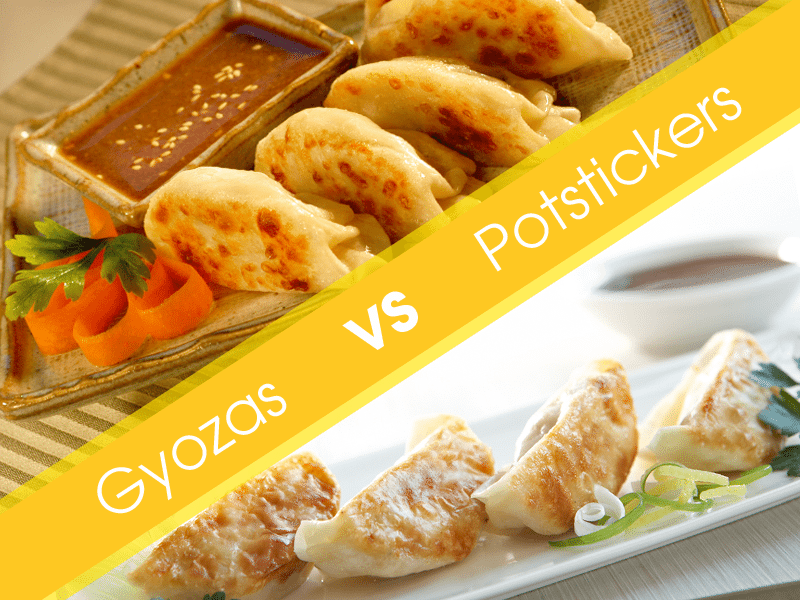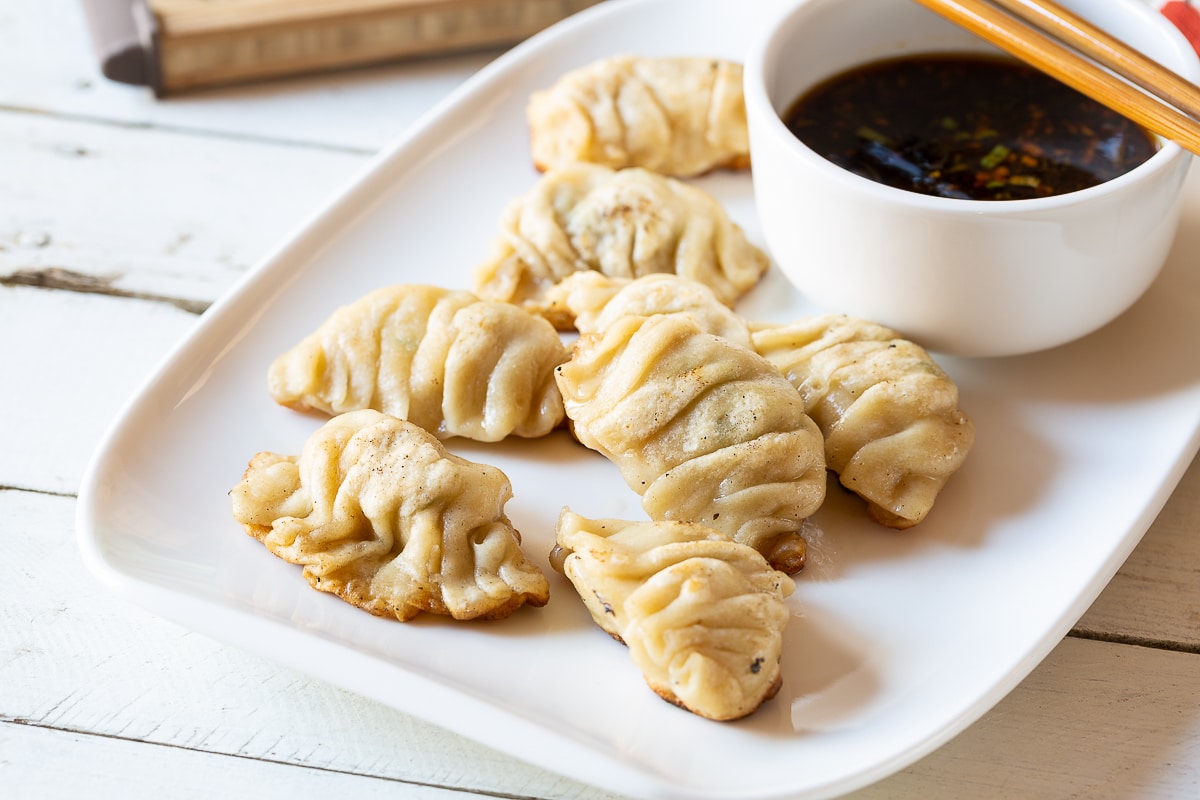Can you have a legible story to tell when someone asks you to help them in understanding the difference between gyoza and potsticker?
Or are you confused and wondering which is which since you know very little about these Japanese dishes though you are interested in knowing more about them?

> You may also want to read:
- What Is Pork Gyoza? Pork Gyoza Recipe?
- What Is Japanese Gyoza Dumpling?
- What Is the Difference Between Shumai Vs Gyoza?
- What Is the Difference Between Shumai Vs Gyoza?
If you are reading this article, you must have at least known one of the two or you slightly know both of them and they appear to be the same thing hence leading to confusion.
Regardless of whatever situation that you may be in that made you find your way here, there are tons and tons of incredible new things you are just about to discover!
Read on to find all the questions that you have been asking yourself answered into detail and vastly clarified.
With much said, let’s begin our discussion about the difference between gyoza vs potsticker. Hope you will enjoy reading this article!
Overview
Which part of the world are you in? Well, where you reside will determine the first dumplings that you are more likely to taste.
For instance, if you are in China or near China, you will have high chances of first eating the Chinese ones while if you are in Japan or similarly near Japan, you are more likely to eat Japanese gyoza first.
Well, have you tasted the Chinese wontons, potstickers or even the boiled dumplings? Or have you ever ordered gyoza at any Japanese restaurants near you?
Put your answer aside, have you ever noticed that the Japanese gyozas are so similar to the potstickers?
You may be wondering if all the Asian dumplings are the same because you have always seen them labeled as “Gyoza Potstickers” whenever you walk into stores such as Trader Joe’s, right? If so, read on to find your answers.
What you need to know about Potstickers
The history of Asian Dumplings
Do you know the origin of these Asian dumplings? For you to understand their differences, you will have to firstly understand how they came to exist. In that case, you need to know that the Chinese are known to be the original inventors of Asian dumplings specifically known as the “Jiaozi” in Mandarin.
To clarify more, Jiaozi is a Northern Chinese specialty from above the Yangtze River.
Again, you need to keep in mind that Jiaozi is mainly prepared by starting with rolling out wheat flour dough and then proceeding by stuffing meat or even vegetable filling. Again, all these dumplings can always be boiled, steamed, pan fried or even deep fried.
Invention of Potstickers
Ever wondered how potstickers were invented? If no, here’s a fun story to listen to today! Potstickers, a specific Chinese dumpling has an attention grabbing story and you should know about it! Here we go…

Though it’s unconfirmed, it’s rumored that years back, a chef had the intention of boiling jiaozi at work but he happened to have walked away and all the water that was present in the pan boiled off. Guess what happened next?
The jiaozi stuck to the wok and even crisped up, resulting in what you and I now call the potsticker which when translated from Chinese, means “stuck to the wok”.
As you read this article, the current common method that is used in preparing potstickers is known as “fry – steam – fry” whereby all the dumplings are firstly lightly submerged in some oil and then water is added to the pan.
It’s then covered to steam and cook the dumpling filling and then later the pan is uncovered so that the water is able to cook off and the dumpling pan fries crispy on the outer part.
Potstickers are always of medium size dumplings and are usually eaten with just two to three bites. They are also known to be fairly thick since most of the wrappers used are homemade that also tend to crisp up nicely on the outer part and also the inner side has a juicy filling.
In the U.S potstickers are also called the gateway dumpling – for a good reason. This is mainly because they are vastly available in many of the Chinese restaurant menus across the U.S and are again known as “Peking ravioli” in the Boston area.
What you need to know about Japanese Gyoza
The History of Gyoza
Now that you have understood what Chinese potstickers are in detail, you need now to compare them to Japanese Gyozas, isn’t that so?
When you choose to do further research on this topic, you will notice that many sources claim that the Japanese borrowed this culinary idea from the Chinese.
They point out that the Japanese soldiers were exposed to jiaozi when they were fighting in World War II when they were at Manchuria, which is located in Northern China.
The Japanese soldiers, who happened to have got the chance to go back to Japan, remembered and decided to recreate the delicious dish they happened to eat back then when they were in China.
You also need to know that the similarity of the Japanese gyoza and the Chinese jiaozi is much closer to an extent that gyoza is literally the pronunciation of jiaozi!

Differences between Gyoza and Potstickers
No matter how much these two dumplings tend to appear, they are more of cousins than brothers leading to some gaps that we can point out! They are always made from pre-fabricated wrappers that are always thinner, smaller and even more delicate and also finer textured fillings.
The major difference that you can notice is that the gyozas are always smaller than the potstickers, with just about one to two bites. Though gyozas are always prepared in the same way as the potstickers using the “fry – steam – fry” method, they are always thinner and also there is more focus when it comes to fillings.
Last Words
After reading this article, you can conclude that no matter how similar Japanese gyozas may tend to be similar to the Chinese potstickers, there are still some slight differences that one can spot between the two dumplings such as the size and even the fillings.
Hope all your questions are answered and best of luck!
